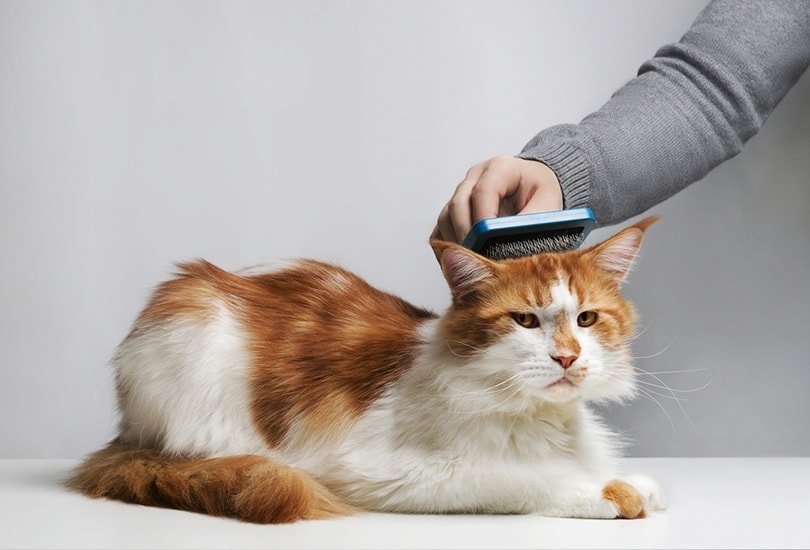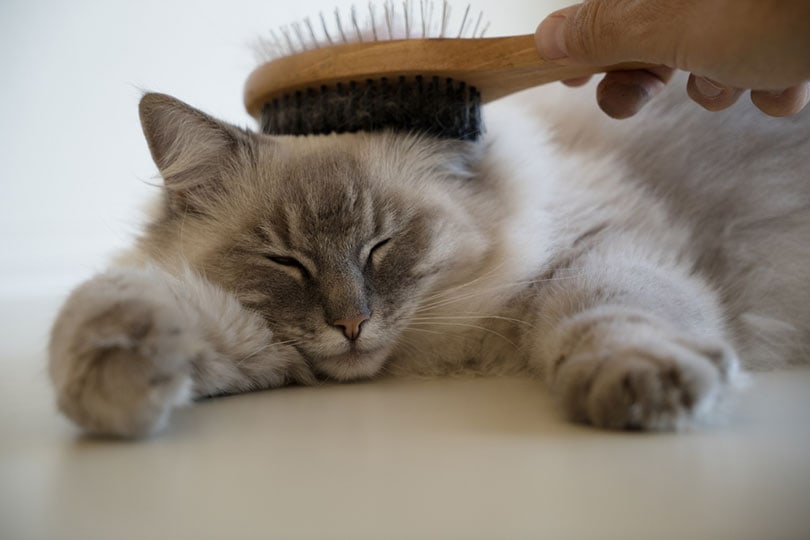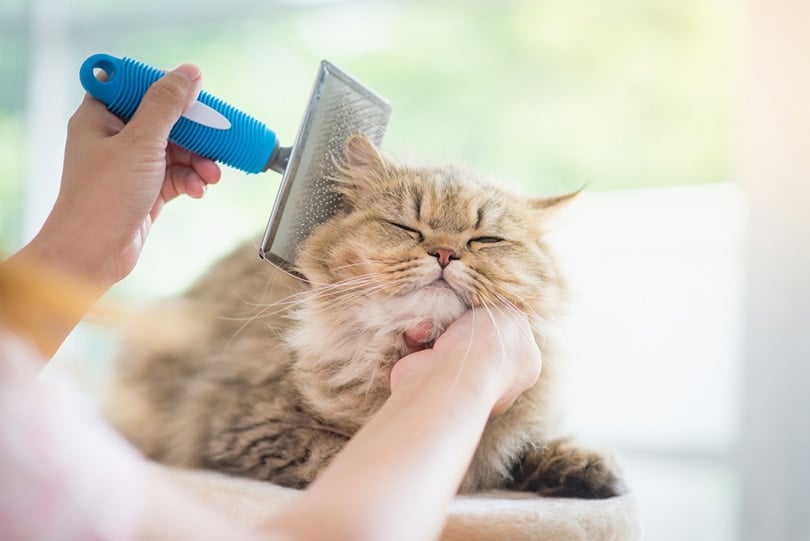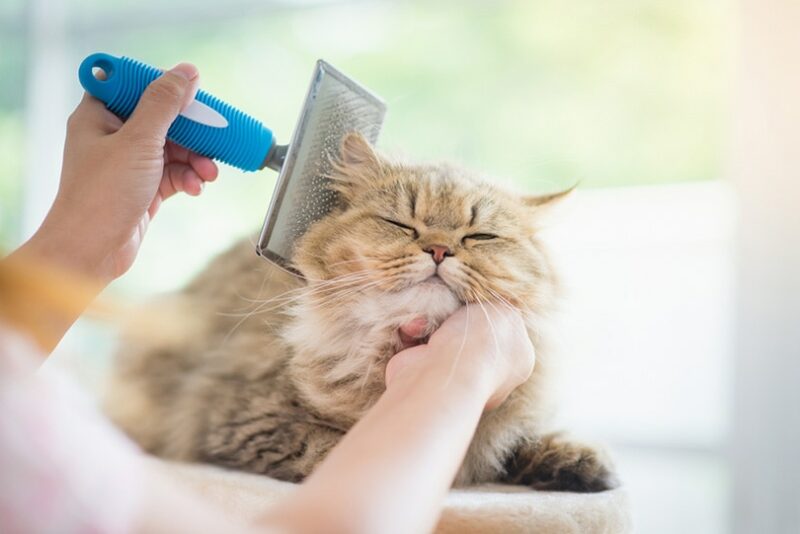If you’re a cat parent, you’re familiar with the lovely moments you spend brushing your cat while they purr away contentedly. Or, if your cat is less cooperative, you’re no stranger to indignant paw swipes. Although brushing may not be your cat’s favorite activity, it’s essential to keep their coat and skin healthy. Most longhaired cats must be brushed daily, but shorthaired felines only need to be brushed a few times weekly.
Read on to learn more about how often brushing is recommended for your cat’s hair type, and check out our grooming tips for cats that hate brushing.
How Often Should I Brush My Cat? Hair Types
When coming up with a brushing schedule, the most important thing to do is determine how often brushing is necessary for your cat based on the type of hair they have.
Long-Haired & Medium-Haired Cats
Long-haired and medium-haired kitties are prone to knottiness and matting, and brushing them daily is best to keep their coats silky and smooth. It’s a good idea to purchase a grooming kit for your long-haired cat, which should contain a wide-toothed comb, a fine-toothed comb, a flea comb, a de-shedding tool, and a wire-toothed/slicker brush.
Short-Haired Cats
Brushing once or twice weekly should suffice for short-haired cats because the hair doesn’t tangle or form mats as frequently as it does on longhaired cats.
Brushing is still a good idea since it removes loose hairs and reduces the risk of hairballs, which all cats are prone to, even short-haired ones. You can even brush your short-haired cat more than once or twice per week, especially if they enjoy it!

My Cat Hates Brushing – What Can I Do?
When your cat strongly objects to brushing, it can make things tricky and stressful! Some cats love getting all the dead skin and hair brushed out, whereas others just don’t take to it. With incredibly playful cats or overstimulated cats, they may see brushing as a game and try to bite the brush or grab it with their paws.
You can help reluctant cats warm up to the experience and get frisky cats into a brushing routine with help from our tips below.
Take Things Slowly
If your cat is nervous about new objects, don’t brush them until they’ve had time to examine the brush. Let them see the brush and sniff at it for a while so they become accustomed to its presence, and give them a few gentle brush strokes in places they like to be petted. Keep the initial sessions short and sweet.
Stick to a Routine
Cats are creatures of habit, and establishing a brushing routine can help your cat become more comfortable with being brushed. Gently brush your cat in short spurts daily at the same time until they start to get used to it. Put the brush away when the session is over to help them associate brushing with specific times only.

Use Treats
Have a pack of your cat’s favorite treats nearby to reward them with before, during, and after brushing. Using the brush on their favorite petting areas can help your cat associate brushing with something positive.
Licki Mat
Try using a licki mat covered in your cat’s favorite treat or tinned food. The act of licking and smelling is relaxing. It may be enough to distract your cat for a minute or two while you get some brushing done.
Final Thoughts
Here’s a quick recap before we let you go and get to work on your cat’s fur. Short-haired cats should be brushed at least once per week, whereas it’s better to brush medium and long-haired cats daily to avoid matting and knotting. If your cat isn’t fond of the process, you can always try gently and gradually introducing them to brushing and using treats to encourage them.
Featured Image Credit: ANURAK PONGPATIMET, Shutterstock












